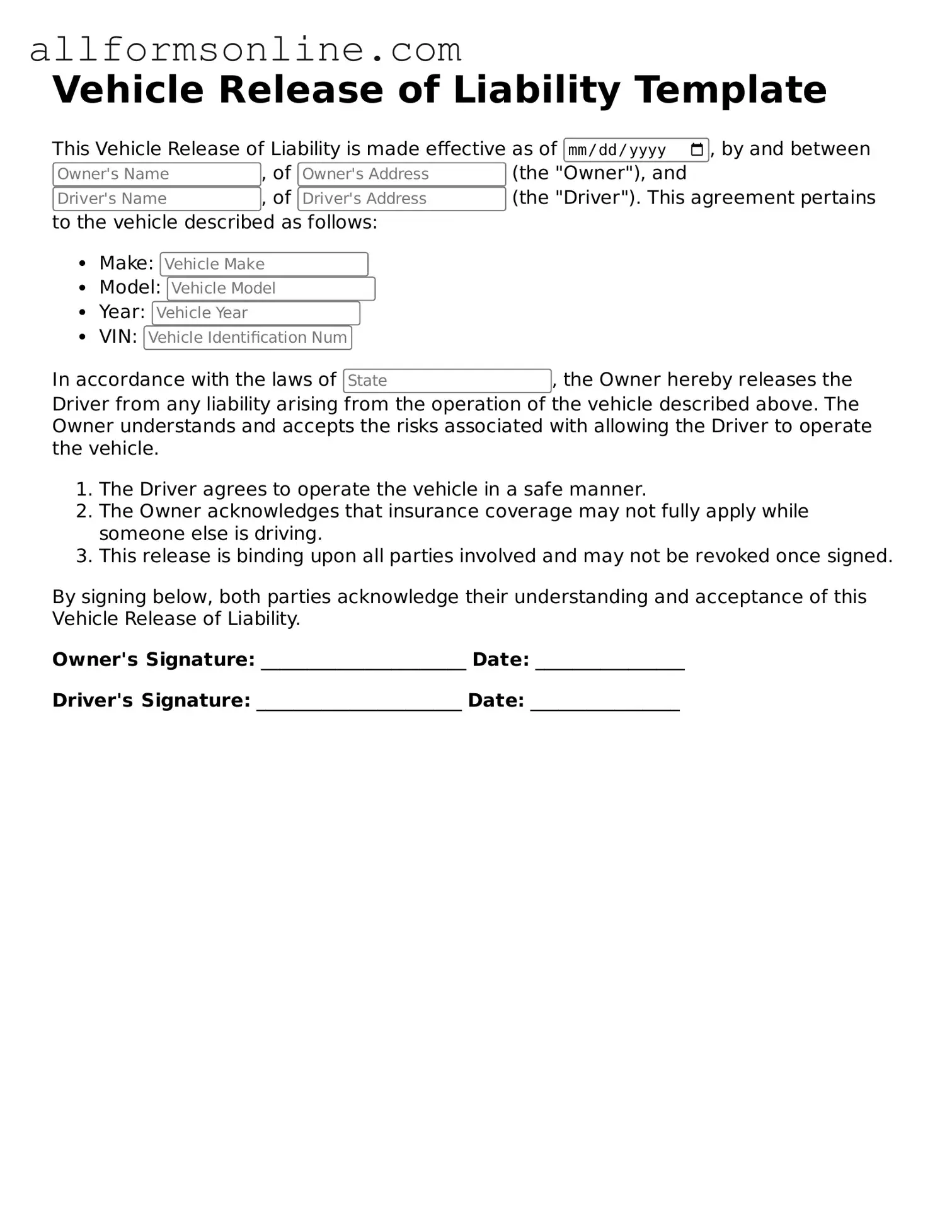What is a Vehicle Release of Liability form?
A Vehicle Release of Liability form is a document that protects the owner of a vehicle from legal claims after they have sold or transferred the vehicle to another person. By signing this form, the new owner accepts responsibility for the vehicle and agrees that the previous owner is no longer liable for any accidents, damages, or issues that may arise after the transfer. It serves as a record of the transaction and helps clarify ownership changes.
Why should I use a Vehicle Release of Liability form?
Using a Vehicle Release of Liability form is important for both the seller and the buyer. For the seller, it provides legal protection against future claims related to the vehicle. This can include accidents or violations that occur after the sale. For the buyer, it confirms their ownership and responsibility for the vehicle. Having this document can prevent misunderstandings and disputes later on.
How do I complete a Vehicle Release of Liability form?
To complete a Vehicle Release of Liability form, both the seller and buyer need to provide specific information. This typically includes the vehicle's make, model, year, and Vehicle Identification Number (VIN). Both parties should also include their names, addresses, and signatures. It’s best to fill out the form together at the time of the sale to ensure all information is accurate and agreed upon. After signing, each party should keep a copy for their records.
Is a Vehicle Release of Liability form required by law?
The requirement for a Vehicle Release of Liability form varies by state. Some states may not mandate this form, but it is generally recommended to protect both parties involved in the transaction. Check your local laws to understand the specific requirements in your area. Even if it’s not required, having this form can help clarify ownership and liability issues, making it a wise choice for most vehicle sales.
